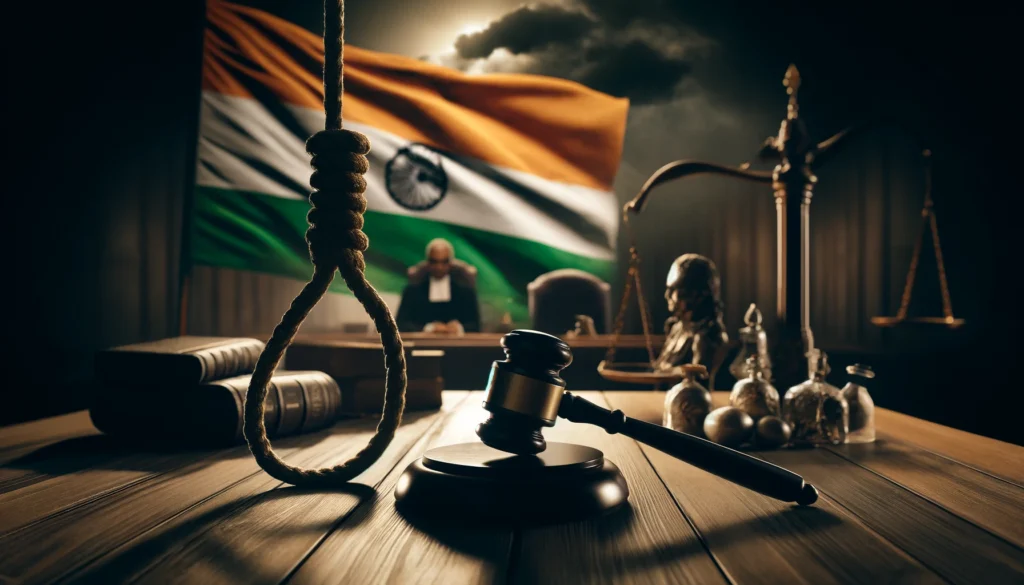Published on 11th April 2025
Authored By: Gautami Gupta
Amity University, Noida
Date decided: 16 November 1992
Case Summary: Indira Sawhney & Others v. Union of India (1992)
Introduction
The landmark case of Indira Sawhney & Others v. Union of India (1992) is a defining judgment in Indian constitutional law concerning the interpretation of Articles 14, 15, and 16 of the Constitution of India, specifically regarding the reservation policy for socially and educationally backward classes. This case, popularly known as the Mandal Commission case, tested the limits and scope of affirmative action in India. The Supreme Court delivered a landmark judgment, which not only upheld the policy of reservations but also laid down several guidelines to ensure that it did not infringe on the principles of equality and meritocracy.
Facts of the Case
- The Indian government, under Prime Minister Morarji Desai, established the Second Backward Classes Commission, headed by B.P. Mandal, in 1979. The Commission’s objective was to identify socially and educationally backward classes (SEBCs) and recommend measures for their advancement.
- In 1980, the Mandal Commission submitted its report, recommending 27% reservation in government jobs and educational institutions for SEBCs in addition to the existing 22.5% reservation for Scheduled Castes (SCs) and Scheduled Tribes (STs), making the total reservations 49.5%.
- In 1990, the then Prime Minister V.P. Singh announced the implementation of the Mandal Commission’s recommendations, which sparked nationwide protests and violent agitations, particularly from upper-caste groups opposing the move.
- The government issued an Office Memorandum (OM) implementing the recommendations, which was challenged by multiple petitioners, including Indira Sawhney, before the Supreme Court on the grounds of violation of the principle of equality under Article 14 and merit under Article 16(1).
Key Legal Issues Which Were Raised
- Validity of Reservation for SEBCs: Whether the 27% reservation for SEBCs violated the principles of equality enshrined in Articles 14, 15, and 16 of the Constitution.
- Identification of SEBCs: What criteria should be used to determine SEBCs, and whether caste could be used as a criterion.
- Reservation and Meritocracy: Whether reservations adversely affected meritocracy and efficiency in public services.
- Extent of Reservation: Whether the total reservation exceeding 50% violated the constitutional principle of equality.
- Exclusion of Creamy Layer: Whether economically advanced individuals within SEBCs should be excluded from the benefits of reservation.
Arguments of the Parties
Petitioners’ Arguments:
- Violation of Equality: The petitioners contended that the reservation policy violated the right to equality guaranteed under Article 14 by creating undue discrimination.
- Caste as a Criterion: They argued that using caste as the sole determinant of backwardness was unconstitutional and perpetuated caste-based divisions in society.
- Efficiency in Administration: It was asserted that reservations compromised efficiency and merit in public services, as enshrined in Article 335.
- Arbitrariness of 50% Rule: The petitioners challenged the logic of capping reservations at 50%, claiming it had no constitutional basis.
- No Exclusion of Creamy Layer: They opposed the reservation benefits being granted to economically well-off members of SEBCs, arguing that it defeated the purpose of social justice.
Respondents’ Arguments (Union of India):
- Affirmative Action: The respondents contended that reservations were a means to achieve substantive equality and uplift socially and educationally backward classes.
- Caste as a Relevant Factor: They argued that caste was a legitimate criterion for identifying backwardness, as it was a primary marker of social stratification in India.
- Judicial Deference: The government argued that policy decisions like reservations were within the domain of the legislature and executive and should not be interfered with by the judiciary.
- No Impact on Merit: It was contended that reservations were aimed at providing equal opportunities to historically disadvantaged groups without compromising merit.
- Validity of Office Memorandum: The respondents defended the Office Memorandum, asserting that it was in line with the constitutional mandate of Articles 15(4) and 16(4).
Holding of the Court
The Supreme Court, in a 6:3 majority judgment, upheld the constitutionality of the reservation policy with certain modifications. The key holdings were:
- Reservations for SEBCs Valid: The Court upheld the 27% reservation for SEBCs, recognizing it as a valid exercise of the power conferred by Article 16(4).
- Caste as a Criterion: Caste was held to be a relevant factor for identifying backwardness, but not the sole criterion. Social, economic, and educational indicators were to be considered.
- Exclusion of Creamy Layer: The Court introduced the concept of the “creamy layer,” ruling that socially advanced individuals within SEBCs should be excluded from reservation benefits.
- 50% Ceiling: The Court capped the total reservation at 50%, except in extraordinary circumstances, to ensure that it did not violate the principle of equality.
- No Reservations in Promotions: The Court held that reservations should be confined to initial appointments and not extended to promotions in public employment.
Reasoning Behind the Judgment
Now, let us dive into the reasoning behind the judgement that was passed by the Honble Supreme Court.
- Substantive Equality: The Court emphasized that equality under the Constitution was not limited to formal equality but extended to substantive equality. Affirmative action was seen as a means to level the playing field for disadvantaged groups.
- Historical Discrimination: The Court acknowledged the historical and systemic oppression faced by certain communities and upheld the need for reservations as a remedial measure.
- Creamy Layer Doctrine: To ensure that benefits reached the genuinely disadvantaged, the Court introduced the creamy layer concept, excluding the socially and economically advanced within SEBCs.
- Balancing Efficiency and Equity: The Court balanced the competing claims of meritocracy and social justice by capping reservations at 50% and limiting their scope to initial appointments.
- Judicial Review: While recognizing the legislature’s prerogative in policy matters, the Court asserted its role in ensuring that such policies adhered to constitutional principles.
Impact of the Case
The Indira Sawhney judgment had far-reaching implications for India’s reservation policy and social justice framework:
- Introduction of Creamy Layer: The judgment’s insistence on excluding the creamy layer ensured that the benefits of reservations were targeted at the most deserving sections within SEBCs.
- Reservation Policy Reforms: It provided a judicial framework for implementing reservation policies, influencing subsequent legislation and executive actions.
- Social Justice Discourse: The judgment reinforced the constitutional commitment to social justice and equality, shaping public discourse on affirmative action.
- Judicial Precedent: The principles laid down in this case have been relied upon in subsequent cases, such as M. Nagaraj v. Union of India (2006) and Jarnail Singh v. Lachhmi Narain Gupta (2018).
Now, let us look into the principles laid down in these cases in greater detail.
In the landmark judgment, the Supreme Court laid down several principles concerning the implementation of reservations in promotions under Article 16(4A) of the Constitution of India. The key principles include:
- Constitutionality of Article 16(4A): The Court upheld the constitutional validity of Article 16(4A), which allowed the state to provide reservations in promotions for SCs and STs. However, it imposed conditions to prevent arbitrary use of this provision.
- Requirement for Quantifiable Data: The state must provide quantifiable data to demonstrate:
- Backwardness of the community.
- Inadequate representation in public employment.
- Maintenance of administrative efficiency. This ensures that reservations in promotions are justified and not merely a blanket policy.
- Exclusion of Creamy Layer: The Court reiterated the principle of excluding the creamy layer from reservation benefits, ensuring that only the truly disadvantaged benefited.
- Non-Reduction of Efficiency: The state must ensure that the reservation policy does not adversely affect the efficiency of administration, as mandated by Article 335 of the Indian Constitution.
- Judicial Review: The policy decisions regarding reservations are subject to judicial review to ensure they comply with constitutional principles.
- Limitations on Reservations: The Court emphasized that reservations are an enabling provision and not a fundamental right. Therefore, their implementation must be justified and limited to the extent necessary.
- Political Ramifications: The decision had significant political implications, influencing electoral politics and policymaking on caste-based reservations.
Conclusion
The Indira Sawhney case is indeed a cornerstone of Indian constitutional law, providing a nuanced interpretation of affirmative action and its role in achieving social justice. The judgment struck a delicate balance between equality and social justice, setting a framework for the implementation of reservation policies. By introducing the creamy layer doctrine and capping reservations at 50%, the Court ensured that affirmative action remained a tool for empowering the disadvantaged without compromising meritocracy. The case continues to resonate in contemporary debates on reservations and social justice, underscoring the judiciary’s critical role in interpreting and upholding constitutional values.
References
- Indira Sawhney v. Union of India, (1992) Supp (3) SCC 217.
- Constitution of India 1950, arts. 14, 15, 16, 335.
- Mandal Commission Report (1980), Government of India.
- M. Nagaraj v. Union of India, (2006) 8 SCC 212.
- Jarnail Singh v. Lachhmi Narain Gupta, (2018) 10 SCC 396.
- Office Memorandum, Department of Personnel and Training, Ministry of Personnel, Public Grievances and Pensions, 13 August 1990.




